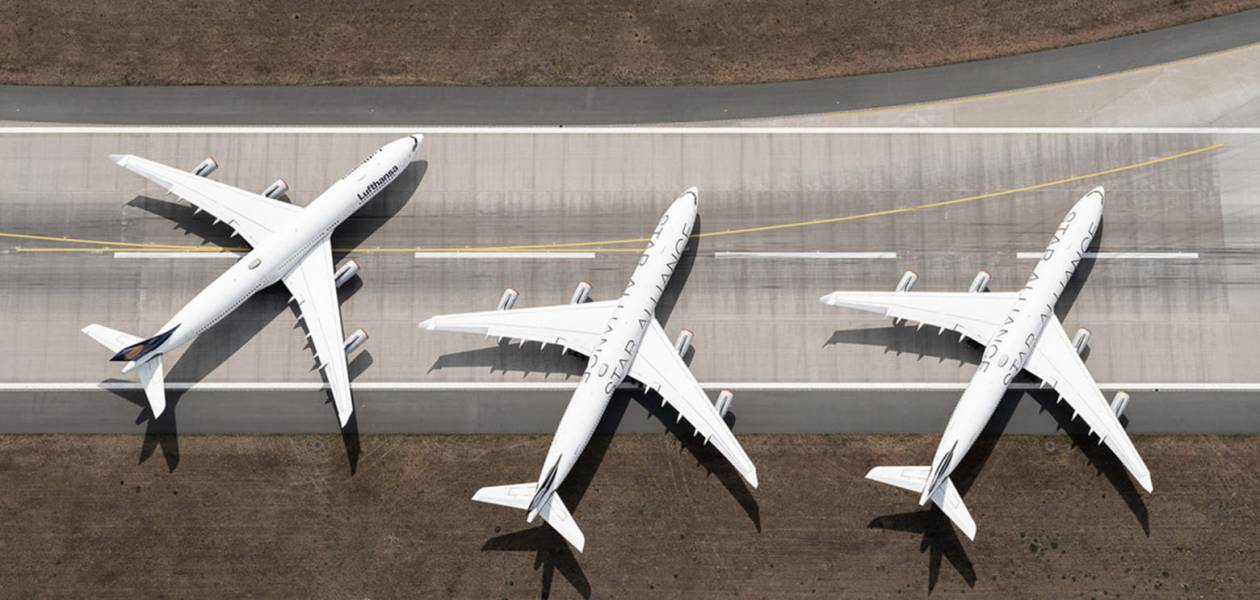
The climate equation becomes more complicated for aircraft manufacturers.
Aircraft manufacturers face many technological challenges; at the top of which is the means of significantly reducing greenhouse gas emissions generated by air traffic. Indeed, many studies have shown that aviation activity contributes to climate change by releasing nearly 2% of global CO2 emissions into the atmosphere. Mindsets are changing, user expectations are high and government demands are adding to the pressure. Consequently, Airbus, Boeing as well as all the smaller players in the aviation sector are working together with engine manufacturers and other equipment suppliers on the means to increasingly decarbonize aviation.
This is, however, not the only problem they face. Here they are, now caught up by climate change. Rising global temperatures as well as ever more frequent and marked episodes of intense heat severely disrupt air traffic by preventing planes from taking off. This ironic situation with significant economic costs is causing great concern.
On the side of Toulouse (France) where the aircraft manufacturer Airbus is installed, researchers and engineers have been studying the question for several months. In Cerfacs (European Center for Research and Advanced Training in Scientific Computation) in charge of measuring the impact of high temperatures on air traffic, it says: "The increase in global temperatures affect aircraft during takeoff and results the reduction in the intensity of the air and, therefore, in the thrust force required for take-off of the airplane ”.
Under these conditions, the planes remain on the ground. It is impossible for them to take off. Like what happened in 2017 at Phoenix airport, in the United States or more recently at Paris-Charles de Gaulle airport, where temperatures rose respectively to 47 ° C and 42 ° C. The news of recent days shows us, alas, that these phenomena of high heat are repeated more and more often and for many experts, this is only the beginning. In such a context, planes have to wait for temperatures to drop before they can take off.
A vast research program called “Impact of climate change on aviation” is currently being carried out by Cerfacs in partnership with several organizations such as Isae-Supaero, Météo France, Onera, Enac and the aircraft manufacturer Airbus. A member of the study, Mrs. Emila Sanchez Gomez, explains that all the data thus collected will help to improve the devices and to "establish priorities, in particular concerning the most vulnerable airports, those which may be most affected by this temperature rise ”, such as airports in Madrid, Dubai, Mexico City, Johannesburg, Quito and Phoenix.
A few lines of thought emerge. It is possible to act directly on the aircraft by reducing its weight, which means fewer passengers boarding and less luggage. Increasing the length of the runway for take-off is also a solution under consideration. This option would allow "the plane to be able to accelerate sufficiently and reach the critical speed to take off", specifies Emilia Sanchez Gomez, as is already the case at Dubai airport. But again, the costs are very important.
Global warming is accelerating another phenomenon. And not the least. Turbulence, and more specifically turbulence in clear skies. They have been known for a long time already and still little appreciated but studies tend to show that this inconvenience could well intensify in the years to come and prove to be frankly painful. This is what Emilia Sanchez Gomez underlined: "turbulence in clear skies is increasingly problematic and with climate forecasts for 2050, these cases of severe turbulence could increase". More carbon dioxide in the atmosphere means more turbulence. By the middle of the century, the increase in emissions will increase the temperature difference between the air bands when planes are at cruising altitude. If we mix this in a space where there are already large quantities of what we call "jet streams", we get strong atmospheric disturbances at the origin, among other things, of air holes.
New laws, increase in global temperatures, different perception of air transport by environmentally conscious users, decarbonisation, aviation will have a lot to do in order to bring the sector towards its ecological transition while effectively combating the consequences of global warming.
Posted on 2021-07-08 11:03








Comments